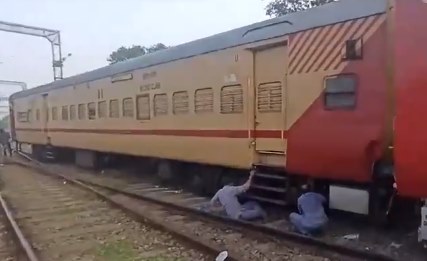15th Finance Commission holds high level discussions on ‘Fiscal Relations across levels of Government’
The 15th Finance Commission today held a high level roundtable on ‘Fiscal Relations across levels of government’. It was moderated by Shri N. K. Singh, Chairman of the Commission. The roundtable is being organised in partnership with the World Bank, OECD and ADB. This is the culmination of significant works that all the three organizations have undertaken for the FC.
Addressing the gathering the Chairman set the tone of the discussions by briefly elaborating on the four technical sessions of the meeting:
o Sub-national debt
o Transfer design incentives and fiscal equalization.
o Sub-national budget and Public financial management system, and
o Finances of third-tier of Government.
Earlier, the Commission had held separate workshops with the OECD in April, 2018 and the World Bank in July, 2018 to discuss the initial thoughts and country experiences on the issues related to fiscal federalism and inter-governmental transfers. Today’s roundtable is a concluding session of the work being done by the World Bank, OECD and ADB for the Commission. The discussions were about the findings coming out of the research work and analysis done by their teams.
Sub-national debt, fiscal rules and sustainability
· One of the Terms of Reference made to this Finance Commission is to review the current level of debt of the Union and the States and recommend a fiscal consolidation roadmap for sound fiscal management.
· As per the amended FRBM Act, the Central Government shall take appropriate steps to ensure that:
o The general government debt does not exceed 60%;
o The Central Government debt does not exceed 40% of GDP by the end of FY 2024-25.
· The Central Government debt is estimated at 48.9 per cent as a percentage of GDP for 2018-19. It is expected that Central Government liabilities will come down to 47.3 per cent of GDP in 2019-20 (As per Budget 2019-2020).
· The outstanding liabilities of the State Governments stands at 23.4 per cent of GSDP at end-March 2017, with a range of 46.3 per cent in Punjab and 15.1 per cent in Chhattisgarh (as the RBI Study on State Budgets).
· These developments have posed an important and challenging task for the Commission to arrive at a roadmap for Commission’s award period from 2020 to 2025.
· Today’s discussions focused on:
o What should the distribution of this 60% be between centre and states, given the current trends in their debts.
o How to arrive at the inter se distribution of aggregate state debt between states.
Intergovernmental transfer design, incentives and fiscal equalization
· Addressing vertical and horizontal imbalance in the fiscal resources between Union and States is one of the major tasks of the Commission.
· While designing formula-based transfers to sub-national governments, equalization is one of the important considerations.
· In this context; the roundtable discussed the options available to design an equalization scheme for the Indian federation, given the constraints of data on unit cost of service delivery and on the taxable potential of the Centre States and
· The Commission’s Terms of Reference requires it to recommend performance-based incentives to states. Some of the items in this indicative list are efforts on GST, population control, increasing capital expenditure, implementation of flagship programs, etc. The meeting discussed –
o Whether it should be incentive for prospective performance or rewards for past accomplishments
o The need for balance between equity and efficiency, considering that the better-off States will generally score better in efficiency consideration.
· International experiences of related cases were also discussed.
Public Financial Management
· Reforms in PFM systems are a continuous process. Previous Finance Commissions recommended on various aspects of PFM systems of both Union and States with focus on budgetary and accounting processes, financial reporting, etc.
· Pace of implementation of such reforms have been slow. Possible causes may be lack of institutional framework to operationalize and implement these recommendations either at Union level or State level, and others likely reasons were discussed.
Revenue generation in third-tier of government
The discussions centered around how to make the 3rd tier self sufficient specially now when the GST has subsumed many taxes which earlier used to generate revenue for them.
· Raising own revenue by the third tier of the government is a serious concern for India’s decentralised administrative structure.
· One of the major sources of raising revenue is property taxation by local bodies.
· Some local bodies have attempted different models to streamline and systematize property collection within their jurisdiction. However, very few have been successful in improving revenue collection through property taxes.
· The reforms required in this field, global practices, ways to help local governments to raise their own revenue through the scheme of devolution, grants, and others were discussed.
******













